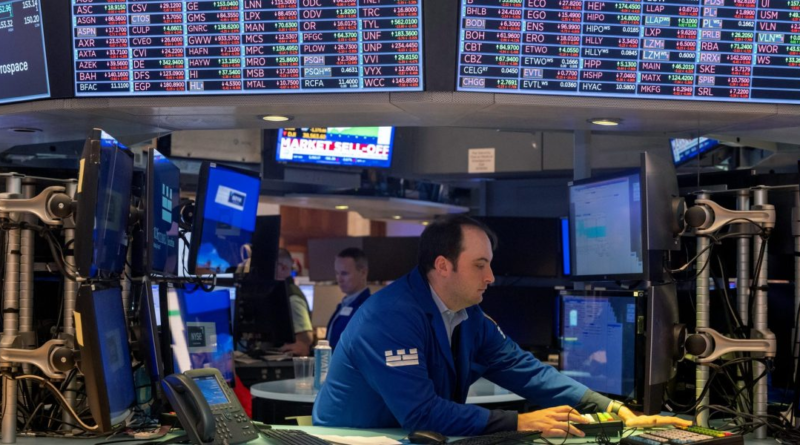Textbook ‘Turnaround Tuesday’ rebound in stock prices doesn’t mean market meltdown is over
It’s an old cliché but the phenomenon known as Turnaround Tuesday — when markets rebound from a selloff at the start of the week — is an opportunity that shows up time and again in the data. The bad news is such recoveries don’t guarantee a bottom has been reached.
Investor psychology during a rout tends to begin with jitters on Thursday, hedging on Friday and all-out selling on Monday, according to Brent Donnelly, veteran trader and president of trading analysis firm Spectra Markets. By Tuesday, the downdraft is primed for a reversal, he wrote in a note published Monday.
The numbers support the thesis. Prior to this week, the S&P 500 had fallen on a consecutive Thursday, Friday and Monday a total of 582 times and the subsequent Tuesday delivered an average gain of 0.2% — which works out to 50% on an annualized basis, according to data going back to 1928 compiled by Bloomberg macro strategist Cameron Crise.
When losses exceeded 1% on each of the previous three sessions — as they did this past week — the Tuesday gain rises to an average 0.63%.
“We are setting up for a textbook Turnaround Tuesday,” Donnelly wrote in his note. “Things are so dramatically oversold, and Tuesday is such a bullish day of the week that I am looking for tactical fade trades,” such as a long position in the Canadian dollar against the Swiss franc, he said.
On Monday, Japan’s two key gauges had tumbled more than 12% as they sank into a bear market from their record highs hit in July. The selloff spread across global markets, with Europe’s Stoxx 600 benchmark declining 2.2%. The S&P 500 Index sank 3%, its biggest one-day drop since September 2022. Wall Street’s “fear gauge” – the VIX – at one point registered its largest spike in data going back to 1990.
Japan is leading a recovery on Tuesday, with its key equity indexes rallying more than 9%, the most since October 2008. Futures contracts for the S&P 500 are up about 0.8% so far Tuesday, following losses over the prior three trading days.
Still, even a healthy Tuesday rebound in equities is unlikely to temper the broad unease growing across financial markets. Investors that buy and sell based on quantitative measures, such as volatility, have offloaded $130 billion of stock bets the past few weeks and that process may accelerate in the days and week ahead.
Volatility Remains
Investors hoping to catch the Tuesday upswing should be aware this may be only a short-term trade.
“I wouldn’t expect this to be a durable bounce,” said Nick Ferres, chief investment officer at Vantage Point Asset Management in Singapore. “There is likely to remain volatility into October, November. Any counter trend rally today and persisting for a few weeks would be something to trim risk into.”
Ferres said Vantage Point bought Japanese stocks Monday as prices fell, but added “this is something more tactical for us.”
At the heart of the decision to buy on Monday was his belief the selling was “impulsive, rapid, and emotional,” and he regrets not purchasing more, he said.
“The magnitude of the selling was so large — the correction over three days was roughly equivalent to what we saw in the 1987 stock market crash,” Ferres said. “With hindsight we should have bought a little bit more.”


